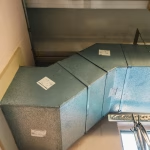With the new developments and technology in zinc alkaline non-cyanide plating this plating option has come back into focus as a top option for many components. In the past, largely because of the toxicity issues in the traditional types of zinc alkaline plating techniques, people moved away from this process.
With the processes that now feature the non-cyanide plating, this has become a top choice when the final product needs to be very bright and free from surface imperfections, including burns. When correctly plated, these parts will be very fine grained and they will not blister, another common problem due to the type of electrolyte used in the process.
It is possible to further protect the part after the zinc alkaline plating process using passivation. This will use trivalent chrome compounds to create a very thin film on the surface of the plating. This thin film becomes self-healing, which means that light scuffs, scrapes and abrasions on the surface will initially remove the passivated layer, but it will regenerate and protect that area, helping to limit any type of corrosion more completely.
While an experienced metal finisher will be able to provide parts that are finished perfectly and to the tolerances required, it is a more complex plating process. Below are some common issues seen with final components when the process is not correctly applied.
Dull or Dingy Color
The natural look of the alkaline zinc plating is a bright, shiny finish. Even with passivation, it will have just a slightly pearlescent appearance, but it should never look dull or dingy.
The most common issues that cause this poor surface looking include problems with the solution. This may include low levels of the carrier or a high zinc concentration. It can also be caused by impurities or contamination in the bath or poor cleaning of the parts prior to the process.
Spotty Deposits on the Surface
One of the most likely causes of spotty deposits with zinc alkaline plating is the water hardness used in the process. Top metal finishers control the quality of the water used in the plating processes to prevent these types of issues.
Pitting or roughness on the surface can also be caused by a range of issues. One that is common between both is bath contamination. Companies not taking the time to clean the bath and to properly maintain the processes are likely to have these issues. Companies with a focus on quality maintenance and processes will not.








